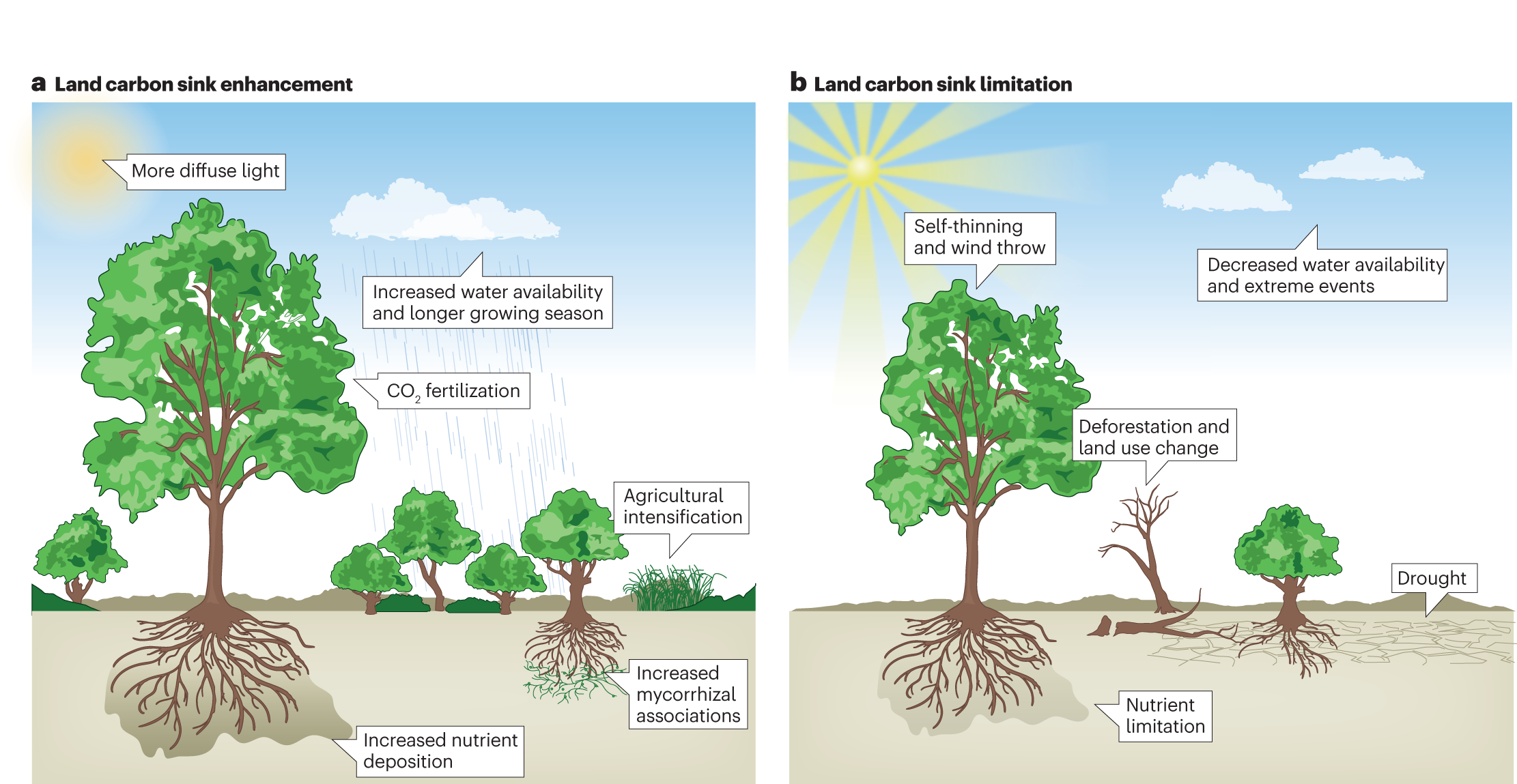The world’s forests, grasslands, and other terrestrial ecosystems have played a substantial role in offsetting human carbon emissions—a capability that UC Berkeley researchers say would be threatened by continued global change.

A schematic representation of the processes enhancing the land carbon sink (left) and the processes limiting the net land carbon sink (right). The past, present and future of the sink are determined by the combined result of enhancing and limiting processes. Graphic courtesy of Ruehr, Keenan, Williams, et al.
The assessment, published today as a new review paper in Nature Reviews Earth & Environment, presents a comprehensive analysis of hundreds of scientific research articles and explores the complex interactions between the Earth's ecosystems and the atmosphere. These terrestrial ecosystems—collectively referred to as the land carbon sink—absorb approximately one-third of anthropogenic carbon emissions annually, and thus have effectively lessened the impact of greenhouse gas emissions linked to humans.
"Research has greatly advanced our understanding of the carbon cycle and the Earth's capacity to regulate climate change," said Environmental Science, Policy, and Management (ESPM) PhD candidate Sophie Ruehr, lead author of the review. "The land carbon sink has served as a buffer, offsetting a significant portion of human carbon emissions and helping to stabilize the global climate."
According to the review, the combination of carbon fertilization—where plants take up additional carbon from the atmosphere while reducing water lost to evaporation—and warmer temperatures in the northern hemisphere helped the land carbon sink double from the 1960s to the 2010s. Without that increase, the authors estimate that the atmospheric concentration of carbon dioxide would have exceeded 500 parts-per-million by 2020.
"We’ve been the beneficiaries of a built-in offset to climate change through the increasing natural land sink,” said co-author Trevor Keenan, a professor in ESPM and scientist in the Climate and Ecosystem Sciences Division at Lawrence Berkeley National Laboratory. “But this natural capacity will likely run out.”
Through their review, the authors show that deforestation, land-use changes, and climate-induced stresses such as drought and extreme weather have continually reduced the land sink’s capacity to assimilate carbon. Keenan warns these trends will likely worsen—particularly if carbon emissions by humans do not taper off—and could cause the land biosphere to shift from a sink to a source of carbon within the next several decades.
“If the land carbon sink stops taking up a significant portion of our greenhouse gas emissions and shifts to a source of carbon, we may see a rapid increase in CO2 concentrations in the atmosphere, accelerating the pace of climate change,” said Ruehr.
The review offers policymakers, researchers, and environmentalists valuable insights on climate change mitigation strategies and the future direction of the land carbon sink. “Implementing sustainable land management practices is one way to increase the land sink further, and an essential part of the solution to the climate crisis,” Keenan said.
Read the full review at Nature Reviews Earth & Environment.
